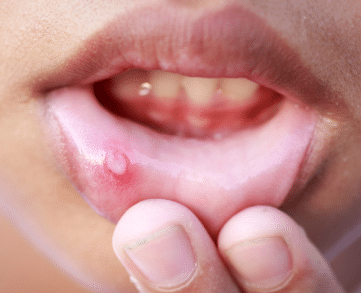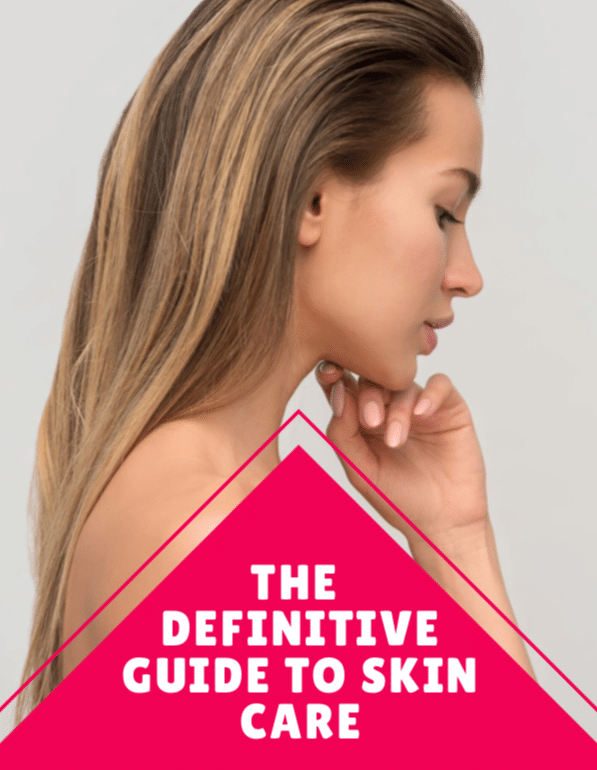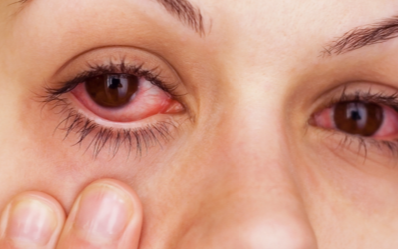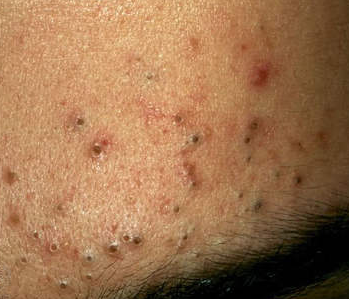An understanding of the red bumps on arms, forearms and legs with pictures and how to get rid of them. Causes of the little, itchy and white red bumps and their treatment.
Red Bumps on Arms
Those that are having red bumps on arms, thighs or backside that looks like chicken skin and occasionally itch, then they probably have a genetic skin disorder known as keratosis pilaris. Just like acne it affects about 50 – 70% of the adolescents and about 40% of adults.
Those that are prone to eczema, allergies and asthma are more likely to be affected with keratosis pilaris. About 50% and above of those who affected with keratosis pilaris have a family history of it.
Keratosis pilaris occurs in different forms. It may range from pink to red bumps on arms to small red bumps that are not irritating, to pimple like bumps that are red and inflamed. These bumpy and rough spots are usually clogged pores whereby the skin cells have become hardened inside the skin pores and inflammation forms up.
There is no cure or an effective treatment for this, though by unclogging the pores and reducing the inflammation can make a big difference. Keratosis pilaris is basically a genetic disorder of the hair follicles of the skin.
This condition usually manifests as rough and small folliculocentric keratotic papules, usually described as chicken bumps, goose bumps or chicken skin in characteristic body areas and particularly on the outer upper arms and thighs. There is no clear etiology that defines it
Most of the people with keratosis pilaris are not aware that the condition has a designated medical term or that it’s treatable. The keratosis pilaris is always cosmetically displeasing but it is medically harmless.
The keratosis pilaris is defined as a condition of the childhood and adolescence. It usually becomes more dominant at puberty and it frequently improves with age. Most of the adults have keratosis pilaris late into senescence.
This can also be caused by Seasonal variation, an improvement of the symptoms during summer months. A Dry skin during winter tends to worsen the symptoms for some patients. The keratosis pilaris is usually self-limited and it tends to improve with age in most of the patients. Other patients may have lifelong keratosis pilaris with periods of remissions and exacerbations.
Keratosis pilaris are only limited to the skin. The skin of the upper arms and the thighs are the ones frequently affected. They are usually described as chicken skin or goose bumps. They are Often between 10 -100 very small and slightly rough red bumps on arms that are scattered on the skin.
Palpation can reveal a fine and sandpaper like texture to the skin. Some bumps may appear slightly red or can have an accompanying light red halo symbolizing an inflammation. In some cases, by scratching the surface of the bumps can reveal a small, coiled hair.
Some Small folliculocentric keratotic papules that are about 1 – 2 mm are noted. These are usually the small red bumps on arms centered on the small hair follicles. Some inflammation also known as erythema can be present, and lesions can be the skin colour. Usually, a small coiled hair may be seen beneath the papule. In other cases, a keratin pimple or plug like material can be expressed from each bump. Cysts and Pustules are usually rare.
Red Bumps on Forearms
The Red bumps on forearms may appear for various reasons. Among them can be certain medical conditions or body contact with specific substances and items. The bumps may also form on the other body areas and can be painful and irritating.
They can even be a symptom of a serious medical condition. It is therefore important to understand on what conditions may trigger rash like red bumps on arms and how they are treated. If the bumps only appear on the forearms, it can probably be caused by the arms having come in contact with an irritant, like poison ivy or a chemical in lotion or soap.
The red bumps on arms may change the texture and color of someone’s skin. The Bumps may be clustered together or can be spread widely across the arm. They can be accompanied by scaling, formation of thicker patches of skin or itching. The bumps may be painful and tender when touched. They can sometimes ooze pus like fluid that crusts over on the skin as the bump heals.
Red bumps on the forearm can also be as a result of a skin conditions or reactions such as eczema, dermatitis and psoriasis. The rashes may develop if a person comes in contact with an allergenic material such as nickel, poison oak, hair dye, sumac or rubber. The Red bumps may also be triggered by irritants such as laundry detergents, harsh soaps, chemicals and also an excessive exposure to the sun.
For treating the red bumps on arms, you have to wash the skin gently using warm water and some little soap. Apply a calamine lotion or hydrocortisone cream on the skin. This will soothe the rash and also add some moisture to the skin.
For the skin conditions such as psoriasis, eczema and dermatitis, a doctor may make a prescription for you. Some Bath products that have oatmeal can also help to relieve rash symptoms.
For prevention of the development of rashes, one has to limit contact with the allergens and the irritating products. A dermatologist or a doctor may run appropriate tests to identify which irritating product or allergens are causing the problem.
If the rash is itchy you have refrain from scratching or else you may cause formation of a scar or an infection. Stress can also make the rashes worse, therefore relaxation techniques such as deep breathing and some meditation may be of beneficial.
Some rashes may be a sign of serious allergic reaction. You have to seek an emergency medical attention if the red bumps are associated with facial swelling, shortness of breath, tightness in the throat or the development of hive like bumps. In case the rash turns purple, you have to let the doctor know. A shot of epinephrine can be needed immediately so as to stop the allergic reaction.
Itchy Red Bumps on Arms
An itchy, red and bumpy rash on the skin is a sign of skin irritation. If it is not affecting your daily routine or covering whole body, then you are not sick otherwise, chances are that it is nothing to worry about and it will clear up itself.
Also self-treating it with over the counter hydrocortisone itch relief cream until it goes away can be sufficient. In case it lasts for over ten days, or if it goes away and comes back, or if the itch cream is not bringing relief, then you have to visit the dermatologist. You may need a stronger and more targeted medication to clear it up.
Here are the causes of the red bumps on arms that are itchy and irritating on the skin.
- Allergic reactions to body care products
These are the cosmetics, hair care and skincare. We always come into contact with many potential allergens each day, therefore there are numerous possibilities for the skin to become irritated. We tend to be allergic to preservatives, and some are usually more allergenic than others.
An example, most of the people are allergic to some chemical ingredient in the sunscreens lotion that absorbs Ultra-Violent rays. It is very common for people being allergic to certain fragrances. An allergist can introduces one to small amounts of common allergens to detect which ones trigger a reaction.
- Eczema
Eczema is a term that is used to describe the many different types of inflammation on the skin, or dermatitis. They may form anywhere on the body. They are most commonly found on the elbow creases and behind the knees. The rashes may look very different from person to person, but it is usually intensely itchy, dry and red.
- Keratosis pilaris
They are also called chicken skin or KP. It is a common skin condition is a variant of eczema. It makes skin cells to cluster around the hair follicles, trapping the hair that is underneath and causes a raised bump.
They typically show up on the backs of the thighs and arms and in big patches of rough, raised skin. It is not always itchy but they may be. Depending on one’s skin tone, these red bumps on arms are usually red or brown in colour. It is chronic managed with products that include chemical exfoliators like lactic acid and glycolic acid.
- Rubbing from fabrics
Putting on clothes that rub one in all the wrong places may cause itchy contact dermatitis. The friction factor of the fabric may be extremely irritating. If one works out and the clothes start to slide against the sweaty skin, an itchy red rash may be noticed after hitting the gym. Cotton is usually not irritating, but a bulky and scratchy materials such as wool are irritating and especially around the neck.
- Bug bites
The Bug bites usually show up as one or a few distinct red bumps on arms, but most people may develop an allergic reaction after being bitten by certain bugs.
This is most common with the mosquito bites, and appear as a bumpy, itchy red rash around the area that was bitten. If one wakes up with itchy red bites that can’t be explained, then it could be a sign that you have bed bugs.
These bites usually appear on the skin that was exposed while sleeping. They may also cause an itchy red rash in those people who are sensitive. One can treat a normal bug bites on their own with hydrocortisone cream. But if it is infected or if it’s leaking pus then you have to visit a doctor.
- Heat rash
Heat rash may cause an itchy red bumps on arms that can also feel prickly and tingle. It usually happens around the neck or on other areas where the sweat gets trapped beneath the clogged pores. Heat rash may appear in different forms, red bumps or tiny clear blisters. The rash is common in a hot and humid weather, and it usually goes away on its own once the skin is cooled down.
- Allergic reactions to medicine or food
By eating food or medicine that you are allergic to may cause one to break out in hives. That is an itchy red rash that forms as welts, a very large bumps. The rash may form anywhere on the body. Because allergies to medications and food may be very dangerous, it is important to get checked out As Soon As Possible if you have hives or if you ingested something that lead to a rash.
- Sun allergy
This is whereby the body is having a reaction to sudden burst of sun exposure. It mainly happens on the forearms or other body areas that have been covered for long time and then all of a sudden exposed to the sun. This does not happen to everyone, but there are people who have some sort of allergy to it
Little Red Bumps on Arms
Keratosis Pilaris are more commonly known as the rough little red bumps on arms and on the backs of the thighs. This is a very common skin disorder. About 40% of the adult population suffers from it.
It is usually caused by the skin cells not exfoliating properly and instead collecting in the top of the hair follicle creating roughness. This condition is normally with a strong genetic component but it has variable penetrance, therefore one may carry the gene but not having much to show for it.
One may get it all over the arms, thighs and cheeks. It is usually associated with an atopic eczema and a dry skin condition known as ichthyosis vulgaris.
They cannot be eliminated totally but can be managed and even reduced.
Bumps on Upper Arms
Even though possible, it is very rare to have keratosis pilaris all over the body. The lesions in the keratosis pilaris mostly involve the back of the upper arms. The Other common locations can include the back, buttocks, thighs and also the face. It does not affect the mouth, eyes, palms, or soles.
The keratosis pilaris patients usually have a scattered, patchy rash made of very small red bumps on arms or tan. They are usually about ten to hundreds of very small and rough bumps which are scattered on the skin area. The affected area can have a fine, sandpaper like texture. Some bumps can be slightly red.
In some other cases a small coiled hair can be trapped under the rough bump. The Patients can complain of an irregular cosmetic appearance of the skin and a rough texture. The cheeks can appear red, pink, flushed, and may be studded with very small pinpoint bumps.
Red Bumps on Arms and Legs
The small red bumps on arms or white bumps that looks like goose bumps on the thighs, arms or legs and do not itch or they itch very little can be the keratosis pilaris. It is a very common condition affecting approximately 50 to 80% of the teenagers, and about 40 % of adults.
Keratosis pilaris forms up when the pores get clogged with keratin, a protein found in the skin, nails, and hair. One is more likely to get it if having a dry skin or eczema. This condition is harmless, but you may consult a doctor about using medicated creams. Laser therapy can be used in severe cases.
Also the Small, red bumps on arms or pimples can occur on the legs when shaving the hairs or where clothing rubs the skin can be a signs of folliculitis. It is also known as razor rash.
This Folliculitis may be itchy and uncomfortable. But it is not serious unless it gets to a more severe type of infection, such as boils, cellulitis and carbuncles. The Folliculitis clears up on its own. In case it lasts for longer than 10 days or more, then you have to consult your doctor.
Insect Bites can also cause the little red bumps on arms. The most Common insect that causes this can include, mosquitoes, fleas, chiggers, lice, bed bugs, scabies and gnats.
This Itching can be treated by oral or topical corticosteroid, or an application of calamine lotion.
Prevention can be in the form of insect repellants and also keeping the skin covered, is the most effective way in keeping the insects away.
If the red spots form in patches and they itch, they you may have eczema. Eczema can be dry and scaly, or can blister and ooze some clear fluid. Eczema usually tends to flare up sometimes. The cause of eczema is not clearly understood, but there are some common patterns.
The Eczema usually runs in families. One has a greater likelihood of getting eczema if a family member has asthma or seasonal allergies. Eczema is most common in the urban areas with high levels of pollution and during colder climates. The Children born from older mothers are more prone to having this condition.
The medications that can be used to treat eczema can include antibiotics, antihistamines and corticosteroids. The doctor can help you find the medications that is most effective for you. The doctor will also work with you to identify the agents that trigger the eczema and reduce your exposure to them.
Just Like most of the skin conditions, eczema may become infected. If one has eczema, they should avoid being close to people who have cold sores or chicken pox. An exposure to this viruses that causes these conditions can put one at risk of getting eczema herpeticum, this is a severe and rapidly spreading infection.
How to Get Rid of Red Bumps on Arms, Treatment
Always take measures to prevent an excessive skin dryness especially during colder winter months. Make use of mild soaps like Dove soap less cleanser or Cetaphil cleanser when washing. You can lubricate the skin using special lotions containing lactic acid like AmLactin or Lac-Hydrin lotion, alpha-hydroxyl acid lotions or glycolic acid. Then gently massage the lotions into the affected area for at least twice a day.
Do not use harsh soaps or cleansers. When scrubbing, don’t scrub harshly and try to scrape off the skin. You do not have to expect an immediate results with topical creams.
Most of the treatment options and skin care recipes are always available for controlling the signs of keratosis pilaris. Most of the patients have a very good temporary improvement following a regular skin care program of lubrication.
The treatment needs to be continuous. Because there is no available cure or a universally effective treatment for the keratosis pilaris, the list of the potential lotions and creams is very long. It is therefore important keeping in mind that with any condition, there is no therapy is that is uniformly effective to all people.
A Complete clearing cannot be possible. In other cases, keratosis pilaris can also improve or clear spontaneously without doing any treatment.
Therefore to prevent an excessive skin dryness, the use of mild soap less cleansers is recommended. A Frequent skin lubrication is the main stay of treatment for almost all the cases of red bumps on arms.
The Mild cases of keratosis pilaris can be improved with basic over the counter moisturizers like the Cetaphil or Lubriderm lotions. The available therapeutic options for a more difficult cases of the keratosis pilaris can include lactic-acid lotions, alpha-hydroxyl acid lotions, urea cream, salicylic acid and topical steroid creams.
The area affected has to be washed once or twice each day with a gentle wash like Cetaphil or Dove. The Lotions should then be gently massaged into the affected area at least two to three times a day. The Irritated or abraded skin has to be treated only with bland moisturizers until the inflammation resolves.
In some cases, a physicians can prescribe a short seven to ten day course of a medium potency, emollient based topical steroid cream once or twice a day for the inflamed red areas.
Most treatments have been used in keratosis pilaris without a consistent results. Actually there is no miraculous cure or universally effective treatment for the keratosis pilaris, it is therefore important to proceed with caution and lower expectations.
The keratosis pilaris is generally a chronic condition and requires a long term maintenance, most therapies would need a repeated or long term use for optimum results.
The cleansers and lotions for the sensitive skin can include cetaphil, eucerin, dove and curel. You have to Wash daily, and apply the lotion twice a day.
Some of Potent moisturizers for home treatment include lactic acid lotions, salicylic acid lotions, urea creams and alpha-hydroxyl acid lotions. You have to Use once or twice a day.


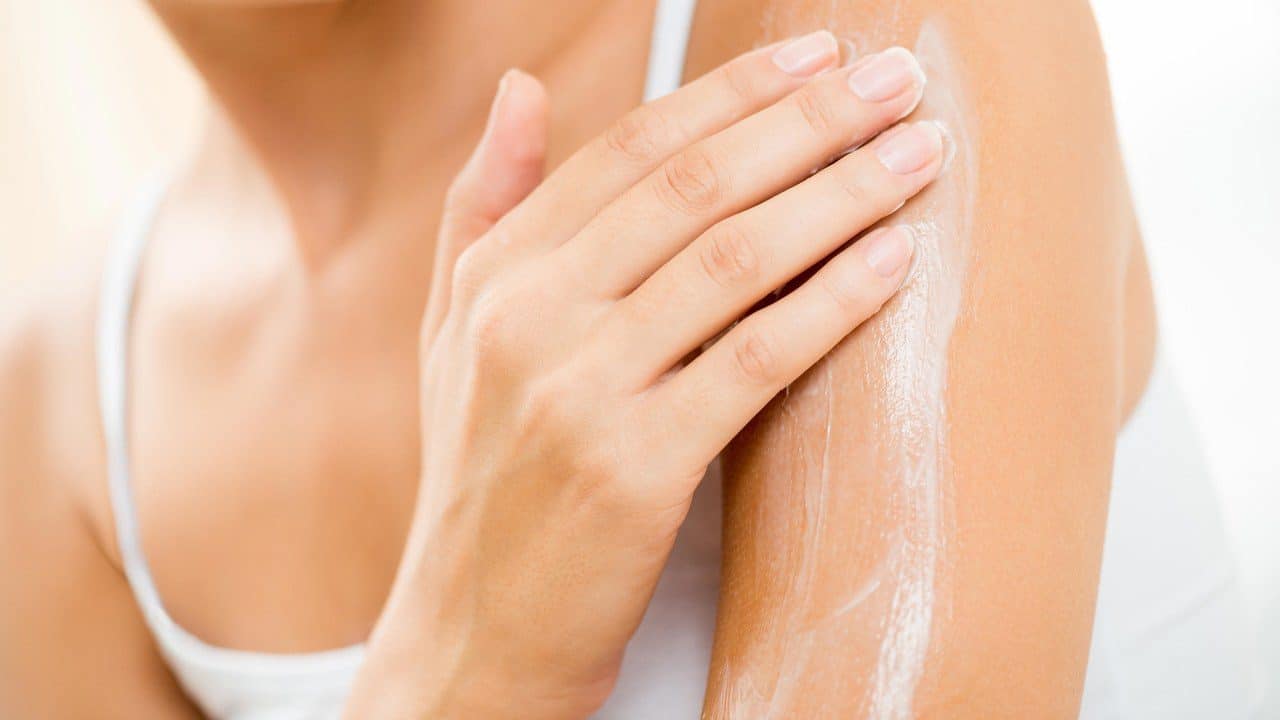
![Red Bumps on Skin [Symptoms & Treatment]](https://lightskincure.org/wp-content/uploads/2017/09/red-bumps-on-skin.png)

